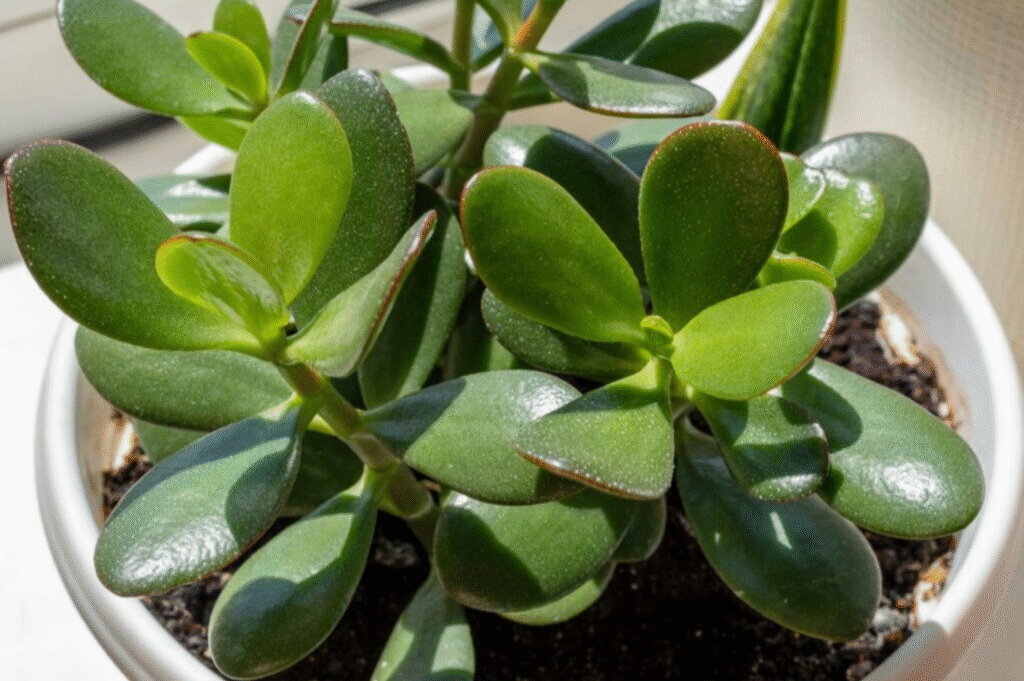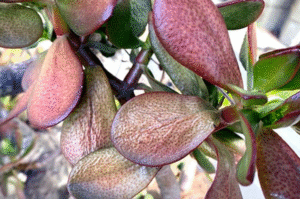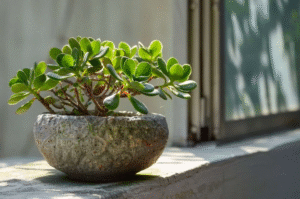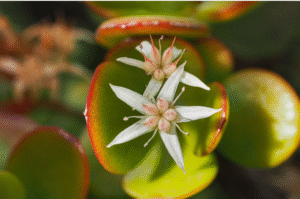The Jade plant, with its chubby leaves and tree-like appearance, is a popular choice among indoor plant lovers. But if you’re new to houseplants, you might wonder, Is the Jade plant a succulent? The answer is yes, the Jade plant is indeed a succulent. However, there’s more to it than just that.
In this article, we’ll explain why the Jade plant is considered a succulent, how to care for it like one, and what makes it unique among other succulents. Whether you’re a beginner or just curious, this guide will give you all the basic knowledge you need.
What Is a Succulent?
Before diving into the Jade plant, let’s understand what a succulent is.
Succulents are plants that store water in their leaves, stems, or roots. This water storage helps them survive in dry, low-moisture environments. That’s why succulents usually have thick, fleshy parts, and they don’t need frequent watering.
Succulents come in many varieties like Aloe Vera, Echeveria, Snake Plants, and yes, Jade plants.
What Is a Jade Plant?
The Jade plant’s scientific name is Crassula ovata. It is also commonly known as:
- Lucky Plant
- Money Tree
- Friendship Plant
- Dollar Plant
Native to South Africa and Mozambique, the Jade plant is known for its thick, oval-shaped green leaves and woody stem that grows more tree-like as it ages. It can live for decades if taken care of properly and is often passed down as a family heirloom.
Why Is Jade Plant Considered a Succulent?
The Jade plant has all the main characteristics of a succulent:
1. Thick Leaves for Water Storage
Its fleshy, oval-shaped leaves store water, allowing the plant to survive during dry periods without needing daily watering.
2. Drought-Tolerant
Just like other succulents, the Jade plant thrives in dry conditions. Overwatering can cause root rot, so it prefers less water, perfect for beginners who forget to water their plants!
3. Prefers Bright Light
Succulents love light, and the Jade plant is no different. It grows best in bright, indirect sunlight, which helps keep its stems strong and its leaves plump.
4. Slow Growing
Succulents grow slowly, and Jade plants follow that same pattern. This slow growth makes them ideal for people who don’t want fast-spreading or high-maintenance plants.
How to Care for a Jade Plant (As a Succulent)
Even though the Jade plant is easy to care for, there are some simple rules to follow to keep it healthy.
1. Light Requirements
- Needs 4 to 6 hours of sunlight daily.
- Place it near a south- or west-facing window indoors.
- If leaves start to fall or look leggy, it’s not getting enough light.
2. Watering Tips
- Water only when the top 1–2 inches of soil is dry.
- During summer, water every 2–3 weeks.
- In winter, reduce watering to once a month.
- Avoid letting the plant sit in water.
3. Soil Type
- Use a well-draining succulent or cactus mix.
- You can mix your own by combining regular potting soil with sand or perlite.
4. Pot Selection
- Always choose a pot with drainage holes.
- Terracotta pots work best as they absorb moisture.
5. Temperature and Humidity
- Jade plants prefer temperatures between 65°F to 75°F (18°C to 24°C).
- They can tolerate dry air, so no extra humidity is needed.
Common Problems with Jade Plants
Even though Jade plants are hardy, they can face issues if not treated like succulents.
Overwatering
The most common problem. It causes root rot and mushy stems.
Lack of Sunlight
This can make the plant grow tall and weak with fewer leaves.
Pest Attacks
Mealybugs or spider mites can sometimes appear. Wipe leaves with a damp cloth or use neem oil.
Benefits of Having a Jade Plant
Besides being beautiful and easy to care for, Jade plants are also believed to bring luck and positive energy, especially in Feng Shui.
Here are some added benefits:
- Air-purifying qualities
- Symbol of prosperity and friendship
- Long lifespan with minimal care
- Great for small spaces like desks and shelves
Jade Plant vs Other Succulents
| Feature | Jade Plant (Crassula ovata) | Typical Succulent (e.g., Echeveria) |
| Leaf Shape | Oval, thick, deep green | Rosette, rounded or spiky |
| Growth Habit | Tree-like, upright | Compact, spreading, or low-lying |
| Lifespan | Very long (decades) | Moderate (few years) |
| Water Storage | In leaves | In leaves/stems |
| Flowering | Yes, small white/pink flowers | Yes, but varies with species |
Final Thoughts:
Yes, without a doubt, the Jade plant is a succulent. Its thick, water-storing leaves, drought resistance, and easy-going nature make it one of the best succulents for both beginners and experienced plant owners.
If you’re looking for a plant that is low-maintenance, beautiful, and packed with symbolism, the Jade plant is a perfect choice. Treat it like a succulent (light, less water, and good drainage) and it will reward you with years of green beauty.






